It's all about the classical music composers and their works from the last 400 years and much more about music. Hier erfahren Sie alles über die klassischen Komponisten und ihre Meisterwerke der letzten vierhundert Jahre und vieles mehr über Klassische Musik.
Total Pageviews
Sunday, February 11, 2024
Berlioz: Hungarian March from The Damnation of Faust // Sir Simon Rattle
Saturday, February 10, 2024
Top 10 Songs with Harmonies That Give Us Chills
Top 10 Catchiest Songs from Classic Broadway Musicals
Friday, February 9, 2024
Charlie Chaplin: The Fiddle and the Tramp
By Georg Predota, Interlude

Charlie Chaplin in The Vagabond, 1916 © Limelight Magazine
Given the dismal state of his upbringing, it is not surprising that Chaplin was looking for a way out. And initially, Chaplin turned to music. “I had great ambitions to be a concert artist, or, failing that, to use it in a vaudeville act,“ he writes. “Each week I took lessons from the theatre conductor or from someone he recommended. As I played left-handed, my violin was strung left-handed with the bass-bar and sounding post reversed.” Practicing his violin from between four to six hours a day, and combining it with his acting talents, Chaplin had become a rising talent in the English music hall by age 16. And soon his fortune changed as the prestigious Fred Karno Company signed him to an extended contract. On his second American tour, Chaplin was scouted for the film industry and began appearing for Keystone Studios in 1914. For his second camera appearance, Chaplin selected the “Tramp” costume with which he became identified, and by 1926 he was a global phenomenon.
Despite an insanely busy filming schedule, Chaplin always found time to play the violin. A press release of 1917 suggested, “Every spare moment away from the studio is devoted to this instrument. He does not play from notes excepting in a very few instances. He can run through selections of popular operas by ear and if in the humor, can rattle off the famous Irish jig or some negro selection with the ease of a vaudeville entertainer. Chaplin admits that as a violinist he is no Kubelik or Elman but he hopes, nevertheless, to play in concerts some day before very long.” Chaplin’s ambitions to appear on the concert stage seem to have cooled by 1921, as he suggested in an interview. “I used to play my violin a great deal up to a couple of years ago, but since then I’ve hardly touched it. I simply have lost interest in such things.” Maybe realizing that he could not seriously compete on the concert stage, Chaplin turned his attention to writing film music. y
Chaplin had always been interested in composing, and he even started a music publishing company in 1916. Although this venture was not successful, he composed all his scores to motion pictures starting with City Lights in 1931. Since he was not a professional musician, he needed help in creating his scores. Chaplin would sing or play his tunes to the composers Davie Raksin, Raymond Rasch or Eric James, who would further develop and score the tunes. Chaplin composed three hit songs, among them “Smile” written for Modern Times in 1936. Impressively, Chaplin also received an Oscar for his theme to Limelight, awarded “Best Original Score” in 1973. As for his violin performances, Chaplin played twice on screen. In The Vagabond of 1916 he uses his violin to seduce a gypsy girl, and in the autobiographical Limelight of 1952, he played a faded music-hall star. Chaplin was a close friend of Jascha Heifetz, and at a party Heifetz picked up Chaplin’s violin and was unable to play it. Chaplin took the instrument and played some Bach, remarking, “You see! I am made inside out and upside down. When I turn my back on you on the screen you are looking at something as expressive as a face.”
JENNIFER HIGDON Cold Mountain Suite
Eight of the Greatest American Women Composers
However, not all of the composers who contributed to American classical music have been men! On the contrary, many of the best composers in American history have been women.
Today we’re looking at the lives and work of eight American women composers.
Amy Beach (1867-1944)
Amy Beach is widely considered to be the first major American woman composer.
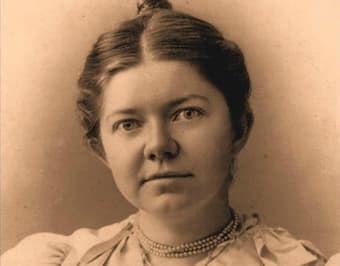
Amy Beach
She was born Amy Cheney in 1867 in New Hampshire. From the beginning, it was clear she was a prodigy. At the age of just four, she composed waltzes in her head while out of the house, then returned home to play them on piano.
She began formal piano lessons with her mother at the age of six. A couple of years later, her family moved to suburban Boston. At fourteen, she briefly studied harmony and counterpoint. This would be her only formal compositional training.
She made a brilliant orchestral debut at 16. But two years later, in 1885, her performing career came to a halt when she married a doctor named H. H. A. Beach, who was twenty-four years her senior.
A condition of the marriage was that she could only perform in public twice a year, and she had to donate any money she earned to charity. Because of this, she began gravitating toward composition.
In 1892, she had her Mass in E-flat Major premiered at the Handel and Haydn Society.
Four years later, the Boston Symphony premiered her Gaelic Symphony, marking the first time a major American orchestra had played a symphony by a woman.
Four years after that, the Boston Symphony premiered her piano concerto.
In 1910, she was widowed, a change in circumstance that granted her freedom to pursue a performing career.
Margaret Ruthven Lang (1867-1972)
Margaret Ruthven Lang was born in Boston to musical parents. Her father was a conductor, pianist, and composer and ensured that she had a good musical education.
In 1886, she went to Munich to study violin. After she returned to America, she studied composition with professors from the New England Conservatory of Music.
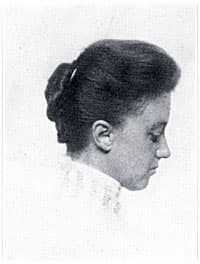
Margaret Ruthven Lang
In 1893, the Boston Symphony premiered her Dramatic Overture, marking the first time a major American orchestra had played a woman’s work. (It just barely beat out Beach’s Gaelic Symphony.)
Sadly, Lang had fierce self-doubts and destroyed many of her manuscripts. It seems likely that her orchestral works were among these.
After her father’s death in 1909, she became less involved with music and more interested in religion, becoming a devoted Episcopalian. Her final work, Three Pianoforte Pieces for Young Players, was published in 1919.
However, she lived for decades more and ended up setting a patron record at the Boston Symphony, having been a subscriber there for 91 consecutive years. She died just short of her 105th birthday.
Florence Price (1887-1953)
Florence Price was born to a Black family in Little Rock, Arkansas. Her father was a dentist and her mother was a music teacher.
From an early age her musical talent was apparent. She gave her first public piano performance at the age of four, and she had her first piece published when she was eleven.
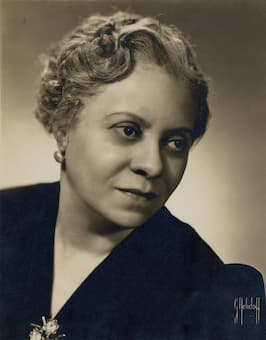
Florence Price © University of Arkansas Libraries Special Collections
She graduated from high school at the age of fourteen and then enrolled at the New England Conservatory of Music.
After graduation in 1910, she returned to Little Rock to teach and start a family. She married a lawyer named Thomas J. Price in 1912 and had three children with him.
To escape the ever-present domestic terrorism of the Jim Crow era, the family moved to Chicago in 1927. Surrounded by the artists that made up the Chicago Black Renaissance, Price returned to her musical career.
She also made a big life change when she divorced in 1931. She remarried the same year to an insurance agent named Pusey Dell Arnett, but the relationship fizzled out. During this time of transition, to make ends meet, she played organ at movie theaters and roomed with friends.
In 1932, her hard work paid off when she won the Wanamaker Foundation Award for her Symphony in E-minor. The following year, the Chicago Symphony performed the symphony, making it the first time a Black woman had seen her work played by a major American orchestra.
Florence Price died in 1953 of a stroke. She has been experiencing a revival over the past few years in America as audiences are rediscovering her charming, deeply moving work.
Ruth Crawford Seeger (1901-1953)
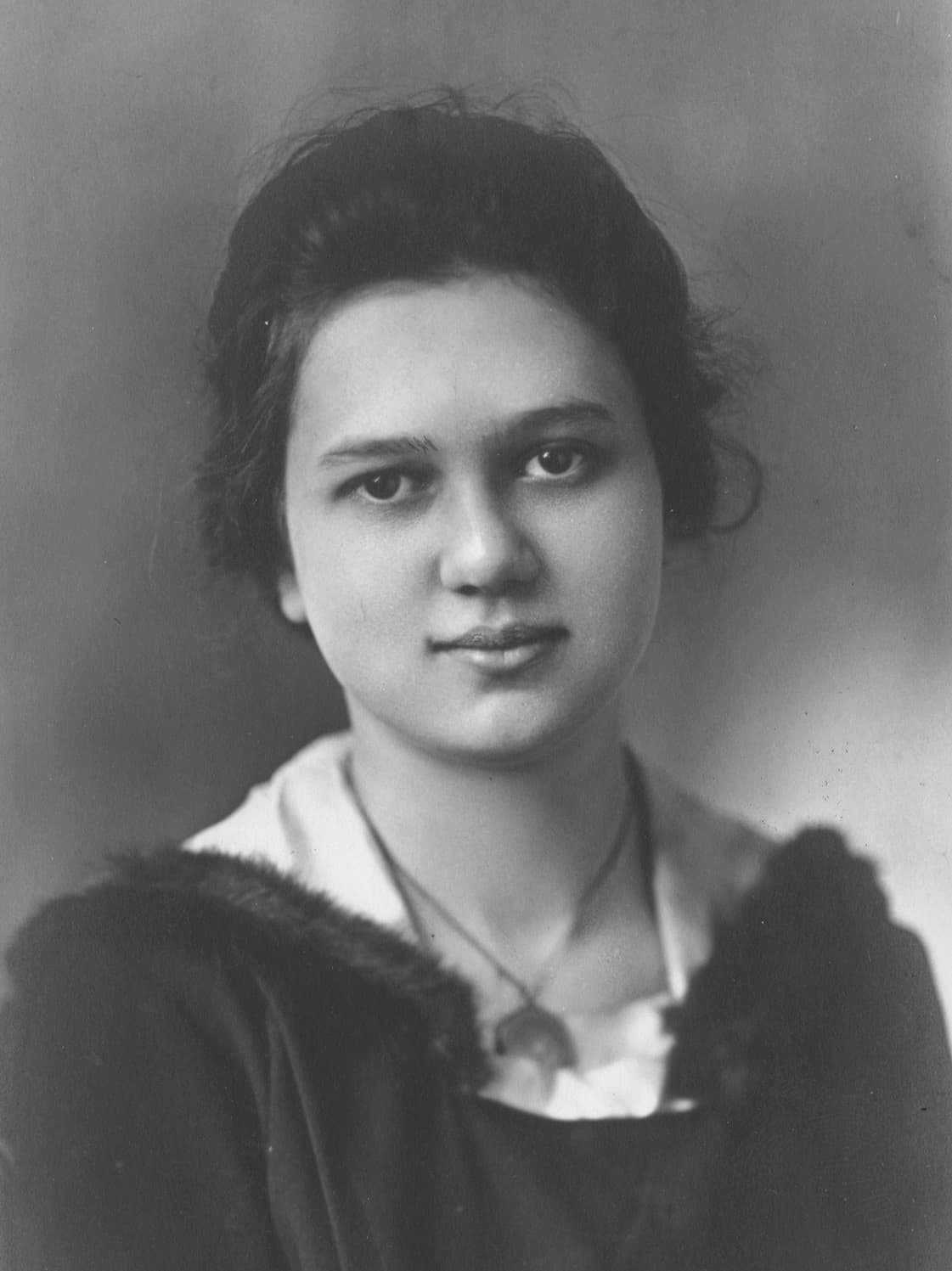
Ruth Crawford Seeger
Ruth Crawford Seeger was born in Ohio in 1901. Her minister father died young and her mother was forced to open a boarding house to make up for the loss of his income.
In 1907 she began piano lessons, and after high school, she settled on a musical career.
In 1921 she moved to Chicago and began attending the American Conservatory of Music. She earned her bachelor’s and master’s degrees there between 1921 and 1929.
After her graduation, she became the first woman composer to receive a Guggenheim Fellowship. She used the money to study in Paris and Berlin.
In 1932 she married her composition teacher, Charles Seeger, who was fifteen years her senior. From 1933 to 1943 she had four children with him.
Her most famous works date from between 1930 and 1933, when she was writing fearlessly modernist works that embrace dissonance and serial techniques.
She died of intestinal cancer in 1953.
Margaret Bonds (1913-1972)
Margaret Bonds was born Margaret Majors in Chicago. Her parents were a Black doctor and his church musician wife, who divorced when she was four. She took her mother’s maiden name and became known as Margaret Bonds.
Margaret was a prodigiously gifted child who wrote her first piece of music at the age of five. In high school, she studied composition with Florence Price and William Dawson.
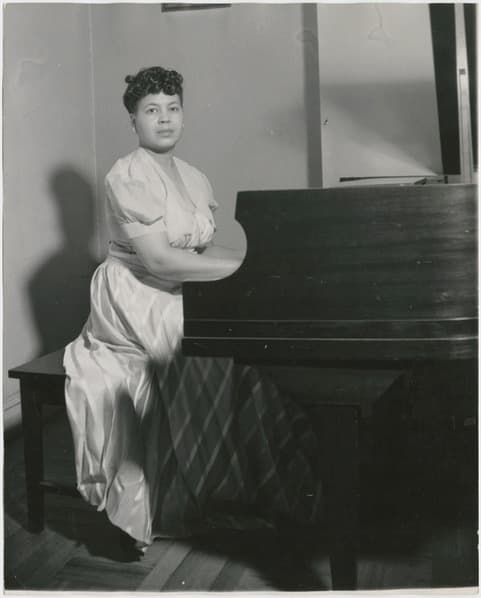
Margaret Bonds
In 1929, when she was sixteen, she began studying at Northwestern University, where she earned her master’s degrees in piano and composition. The atmosphere at the school was deeply racist and difficult for her to endure.
While at Northwestern, in 1933, she soloed with the Chicago Symphony, becoming the first Black person to ever do so.
In 1939, with her degrees from Northwestern in hand, she moved to New York City to go to Juilliard. She married a probation officer in New York in 1940.
Bonds was good friends with poet Langston Hughes and they collaborated on a variety of creative projects over the years.
She also spent time creating projects that would uplift Black artists and the wider community.
In 1964 she composed one of her most ambitious works, the Montgomery Variations, which graphically portrayed the violence and resilience of the 1960s civil rights movement. She dedicated the work to Martin Luther King, Jr.
In 1966, she moved to Los Angeles, where she died in 1972.
Julia Perry (1924-1979)
Julia Perry was raised in Kentucky and Ohio.
She studied voice, piano, and composition at Westminster Choir College. She continued her postgraduate studies at the Berkshire Music Center and Juilliard.
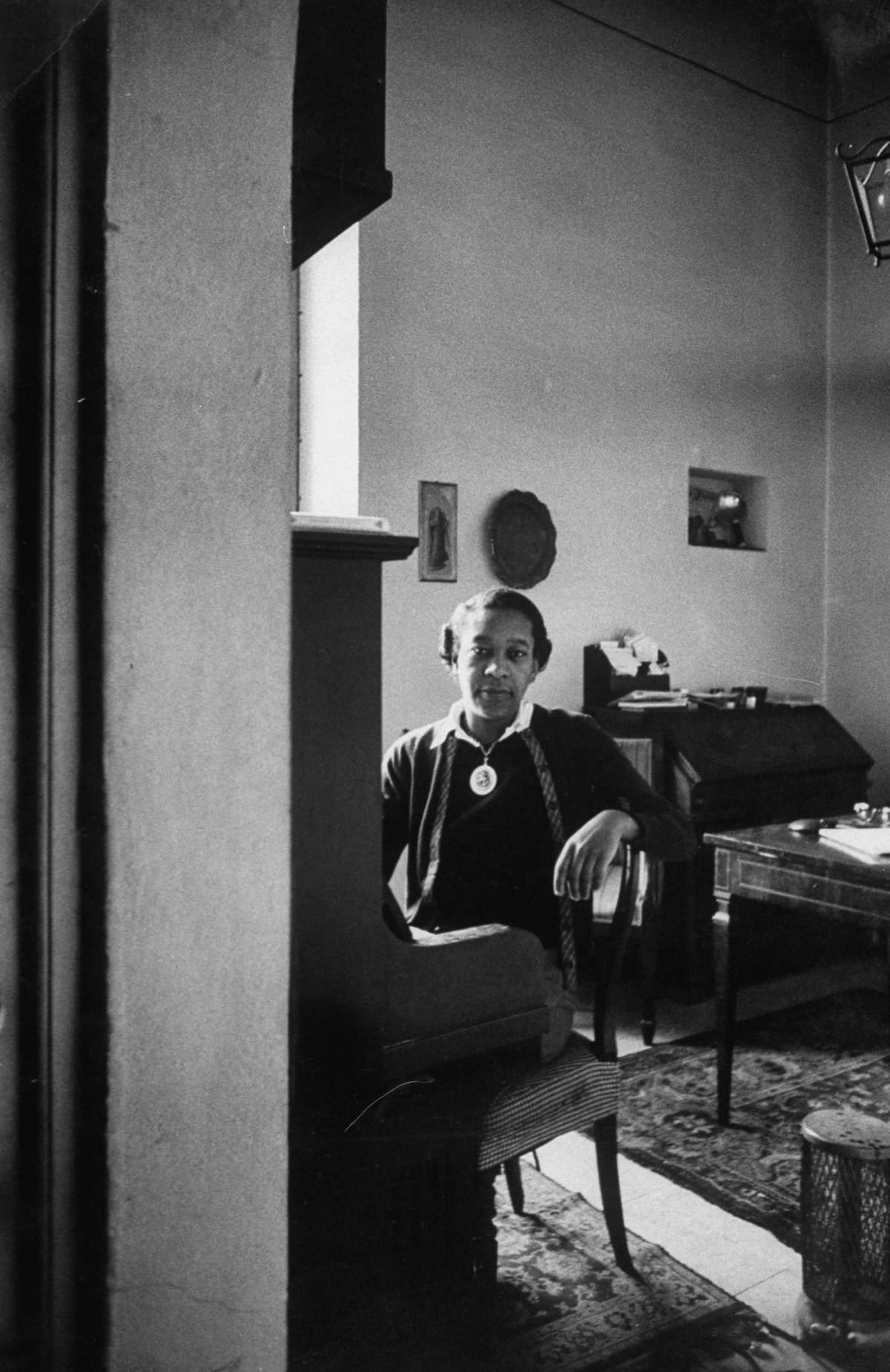
Julia Perry
In 1952 she traveled to Paris to study with legendary teacher Nadia Boulanger. She spent a little over five years in Europe, then returned to America, where she became a teacher herself.
She preferred to write for voice, and wrote several incredible works in vocal genres, including her Stabat Mater. But she also wrote great works for instrumental ensembles, too, including twelve symphonies, two piano concertos, and a violin concerto.
At the time of her death she was working on an opera, which remains unfinished.
Jennifer Higdon (1962-)
Jennifer Higdon was born in Brooklyn, New York, to a painter and his wife, and raised in Georgia and Tennessee.
She didn’t listen to much classical music as a child, and only began playing an instrument in high school, when she started learning percussion and flute.
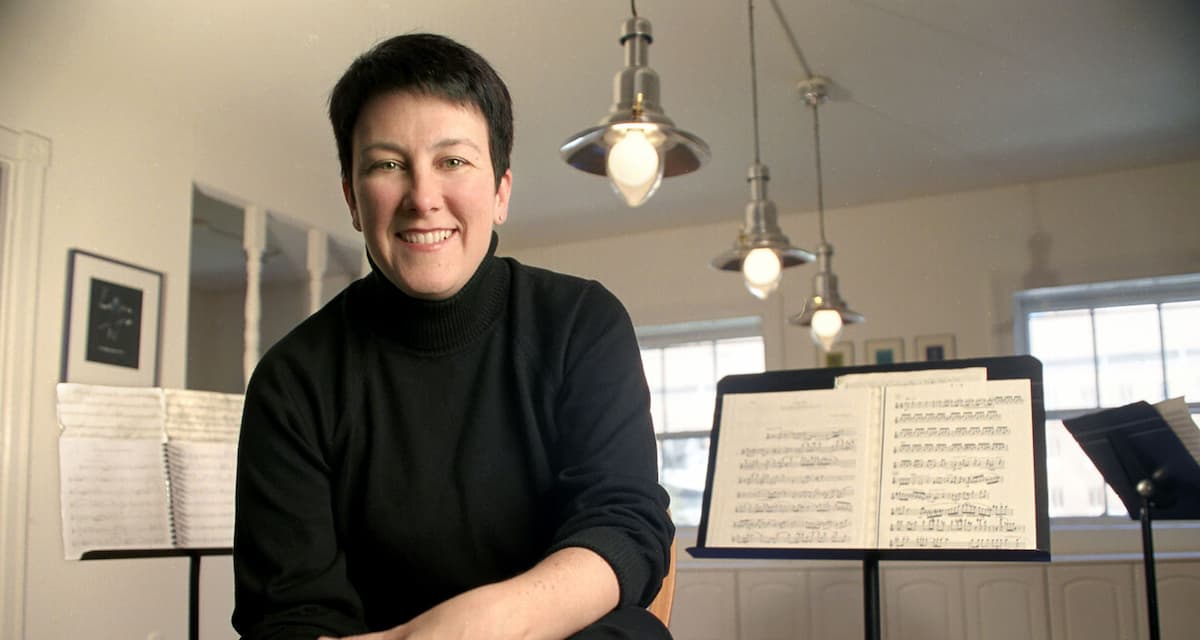
Jennifer Higdon
She attended Bowling Green State University for flute performance and began studying composition there. She later earned her master’s degree and PhD in composition from the University of Pennsylvania, where she studied under George Crumb.
In 1994 she became a professor at the Curtis Institute of Music, the most selective music school in America.
Her compositional style is tonal and accessible; it’s sometimes called neoromantic. Her music has received popular and critical acclaim. She has won three Grammy Awards for Best Contemporary Classical Composition (they were awarded for her percussion concerto, viola concerto, and harp concerto). In 2010 she won the Pulitzer Prize for Music.
Jessie Montgomery (1981-)
Jessie Montgomery was born to a composer and a playwright in New York City in 1982. She earned her bachelor’s degree in violin performance from Juilliard, and her master’s degree in film and media composition from New York University.
She values diversity, arts education, accessibility, and uses her music to engage with ideas and issues surrounding equity and social justice.
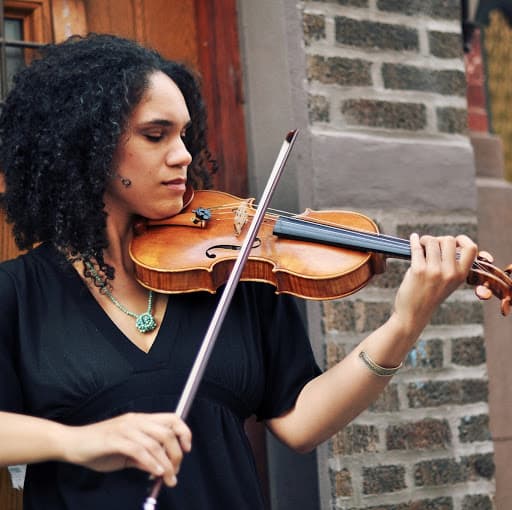
Jessie Montgomery
Her work blends all kinds of musical influences from all around the world, including countries like Mexico, Cuba, and Zimbabwe, and genres like swing, samba, and even techo.
In 2021, she was named the Chicago Symphony Composer-In-Residence.
Today she is one of the most frequently performed new music composers in America.
Thursday, February 8, 2024
“Araw Gabi” Performance Video by Troy Laureta x Katrina Velarde
Paul Abraham - his music and his life
Paul Abraham (Hungarian: Ábrahám Pál; 2 November 1892 – 6 May 1960) was a Jewish-Hungarian composer of operettas, who scored major successes in the German-speaking world.His specialty – and own innovation – was the insertion of jazz interludes into operettas.
Abraham was born in Apatin, Austria-Hungary (today Serbia), and studied at the Royal National Hungarian Academy of Music in Budapest from 1910 to 1916. He studied cello with Adolf Schiffer and composition with Viktor Herzfeld.
Career
Abraham was a son of Jakab Ábrahám (c. 1859–1909) – who was a merchant from Apatin, later head of a small private bank – and Flóra Blau (1872-1943), who came from Mohács (South-Hungary, next to Danube). Like many other composers of operettas, Abraham started with works of a serious nature. During the decade following his studies he wrote, among other things, sacred music, string quartets and a concerto for violoncello. When he was appointed conductor at the Budapest Operetta Theatre in 1927 he found his way to this more popular art form which was more suited to his talent.
His first operetta, Der Gatte des Fräuleins, was written in 1928. With his third, Viktoria und ihr Husar (1930), he achieved a resounding success. Through this work, and the next two operettas from 1931 and 1933 Die Blume von Hawaii (lit. The Flower of Hawaii") and Ball im Savoy he became renowned worldwide. He also wrote numerous film scores.
The Nazi seizure of power in 1933 forced Abraham to abandon his domicile in Berlin and leave Germany. He was unwanted both as a Jew, and as the author of Die Blume von Hawaii, considered a piece of "degenerate art" by the Nazis, telling the story of a German sailor who falls in love with a Hawaiian girl.
Via Vienna and Paris he moved to Cuba where he earned a modest living as a pianist and later emigrated to New York City. After a mental breakdown he was in February 1946 committed to the Bellevue Hospital in Manhattan, later to the Creedmoor Psychiatric Center in Queens. In May 1956 he returned to live in Hamburg, Germany, where he received treatment at the University Medical Center Hamburg-Eppendorf. He died four years later, aged 67.
Selected filmography
The Singing City (1930)
The Private Secretary (1931)
Sunshine Susie (1931)
City of Song (1931)
Victoria and Her Hussar (1931)
The Blue of Heaven (1932)
Gypsies of the Night (1932)
Overnight Sensation (1932)
A Bit of Love / Monsieur, Madame and Bibi (1932)
The Rakoczi March (1933)
Purple Lilacs (1934)
The Typist Gets Married (1934)
Temptation (1934)
Antonia (1935)
Ball at the Savoy (1935)
Modern Girls (1937)
Viki (1937)
Tales of Budapest (1937)
Family Bonus (1937)
Hotel Springtime (1937)
The Wrong Man (1938)
Roxy and the Wonderteam (1938)
Serenade (1940)
The Private Secretary (1953)
Ball at the Savoy (1955)
Works
Zenebona (together with other composers) Operette in 3 acts, 2 March 1928, Budapest. Libretto: László Lakatos and István Bródy
Az utolsó Verebély lány Operette, 3 acts (also known as Az elsö Verebély lány or Der Gatte des Fräuleins) 13 October 1928 Libretto: Imre Harmath and Gábor Drégely
Szeretem a felségem (Es geschehen noch Wunder) Magyar Színház 15 June 1929, Libretto: André Birabeau and Georges Dolley (after: Stella Adorján)
Viktoria und ihr Husar (Victoria and her Hussar), Operette, 3 acts and prologue. 21 February 1930 Budapest, Operettentheater. Libretto: Imre Földes and Imre Harmath (German: Alfred Grünwald and Fritz Löhner-Beda)
Die Blume von Hawaii (The Flower of Hawaii), Operette 3 acts, 24 July 1931 Leipzig, Neues Theater. Libretto: Alfred Grünwald and Fritz Löhner-Beda, after Imre Földes
Ball im Savoy, Operette in 3 acts and prologue. 23 December 1932 Berlin, Großes Schauspielhaus. Libretto: Alfred Grünwald and Fritz Löhner-Beda. English: Ball at The Savoy, 8 September 1933 London, Drury Lane Theatre
Märchen im Grand-Hotel, Lustspieloperette 3 acts 29 March 1934 Vienna, Theater an der Wien. Libretto: Alfred Grünwald and Fritz Löhner-Beda
Viki, Music comedy in 3 acts, 26 January 1935 Magyar Színház, Libretto: Imre Harmath and Adorján Bónyi
Történnek még csodák, Music comedy in 3 acts 20 April 1935 Magyar Színház, Libretto: Imre Halász and István Békeffy
Dschainah, das Mädchen aus dem Tanzhaus, Operette 3 Acts. 21 December 1935 Vienna, Theater an der Wien. Libretto: Alfred Grünwald and Fritz Löhner-Beda
3:1 a szerelem javára Operette in 2 Acts 18 December 1936 Király Színház, Libretto: Imre Harmath, Dezső Kellér and László Szilágyi
Roxy und ihr Wunderteam, Musikalischer Fußballschwank, 25 March 1937 Vienna, Theater an der Wien, Libretto: Hans Weigel and Alfred Grünwald[3]
Julia, Operette in 2 parts and a Nachspiel, 23 December 1937 Városi Színház Budapest, Libretto: Imre Harmath and Imre Földes
A Fehér hattyu Operette 3 acts (The White Swan), 1938
Zwei glückliche Herzen Libretto: Robert Gilbert and Armin L. Robinson. Premiere date unknown
Tambourin Musical in 2 parts (unperformed) Libretto: Alfred Grünwald
Top 65 Classical Music Masterpieces Everyone Knows, But Not Everybody Knows the Title
After the rain - Laura Bretan
Rod Stewart cancels several Asia concerts including Manila
Kristofer Purnell - Philstar.com
February 9, 2024 | 1:37pm
MANILA, Philippines — Pop-rock singer-songwriter Rod Stewart canceled several of his concerts around Asia, including Manila, due to "unforeseen circumstances."
The Asia leg of Stewart's "Live In Concert, One Last Time" world tour had scheduled stops in Malaysia, Thailand, Taiwan, the Philippines, Singapore, and Tokyo.
Concert organizer Live Nation announced the concert cancellations in Malaysia, Thailand, Taiwan, and the Philippines, while the Singapore and Tokyo concerts are still set to continue.
Stewart will perform in Singapore's Marina Bay Sands Grand Ballroom on March 16 and 17 then fly to Tokyo for a one-night concert in Ariake Arena on March 20.
The singer's Manila concert was supposed to take place in Mall of Asia Arena on March 13, his stop before Singapore and coincidentally the same night fellow Grammy winner Janet Jackson has a concert in Araneta Coliseum.
The Philippine divison of Live Nation assured fans who purchased tickets will receive a full refund through their original payment method.
Those who paid with cash are advised to register at smtickets.com/refunds or email email customercare@smtickets.com; the email option is also advised for card reversals.
Stewart still has concerts scheduled this February in the United States, a European tour beginning May, a short Las Vegas residency in July and August, then four more stops around the United States.
The singer began his music career in the 1960s. His hits include "Have I Told You Lately," "I Don't Want to Talk About It," "Forever Young," and "Sailing," to name a few.

